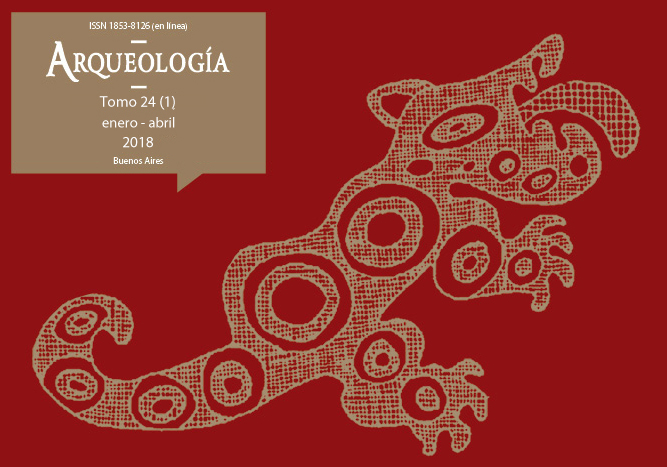Archaeological research at the Las Brusquillas 3 site (Late Holocene, Pampean region, Argentina)
Keywords:
Hunter-gatherers, Interserrana grassland, Late Holocene, Formation processes, Subsistence, Lithic technology
Abstract
This article presents the results of the analysis from the Las Brusquillas 3 site, located in the Interserrana grasslands of the Pampean region. The archaeological assemblage contains faunal remains, lithic artifacts, and mineral pigments from hunter-gatherer occupations dating to the Late Holocene (ca. 2,800 14C years BP). Here, we present a characterization of the stratigraphic sequence, a techno-morphological analysis of the lithic artifacts, and the zooarchaeological and taphonomic data of the faunal remains. e main objectives of this study are to evaluate the taphonomic history and formation processes of the faunal assemblage, identify the animal resources exploited, and characterize the lithic technology. Most of the archaeological material was recovered from a fluvio-lacustrine deposit, where a marshy palaeosol had developed. The results indicate that multiple human activities occurred at the site, including the processing and consumption of faunal resources, and the manufacture, re-sharpening, and use of lithic implements. The main prey was the guanaco and smaller-sized animals were used as complementary resources. The lithic technology is characterized by unifacial aking, a preferential use of quartzite, and an individual raw material provisioning strategy.Downloads
Download data is not yet available.
How to Cite
Massigoge, A., Rodríguez, M. N., Rafuse, D. J., Torino, R. F., Favier Dubois, C., & Steffan, P. G. (1). Archaeological research at the Las Brusquillas 3 site (Late Holocene, Pampean region, Argentina). Arqueología, 24(1), 147-171. https://doi.org/10.34096/arqueologia.t24.n1.4230
Section
Articles
Authors who publish in this journal agree to the following conditions:
- Authors retain copyright and yield to the journal right of first publication with the work registered with attribution license Creative Commons, which allows third parties to use the published always mentioning the authorship of the work and first publication in this magazine.
- Authors can make other independent and additional contractual arrangements for the non-exclusive distribution of the version of the article published in this issue (p. Eg., Inclusion in an institutional repository or publish it in a book), provided that clearly indicate that the work was published for the first time in this magazine.
- It allows and encourages the author / s to publish their work online (eg institutional or personal pages) before and during the process of revision and publication, as it can lead to productive exchanges and greater and more rapid dissemination of work published (See The Effect of Open Access).





(1)13.png)






1.jpg)
1.jpg)


13.png)
1.png)


(1)1.png)









